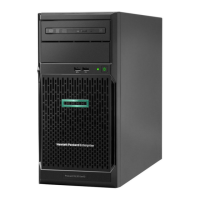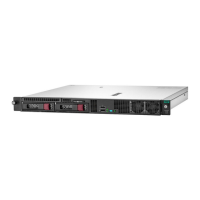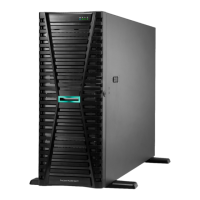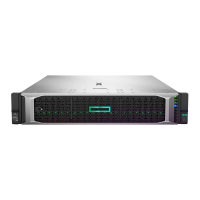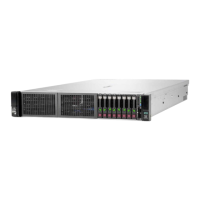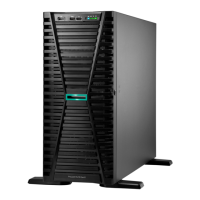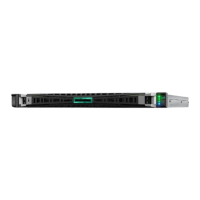suitable for most application workloads. For ProLiant XL servers in an HPE Apollo system, the Workload
Profile is set to High Performance Compute by default.
Selecting a Workload Profile other than the Custom profile affects other setting options. For example,
selecting the General Peak Frequency Compute profile automatically sets Power Regulator mode to
Static High Performance. This setting cannot be changed and is grayed out.
Workload Matching
The default BIOS settings on HPE servers provide a balance between performance and power efficiency.
These settings can be adjusted to match specific application workloads.
HPE Gen10 servers offer a UEFI configuration option to help customers tune their BIOS settings by using
known workload-based tuning profiles. When matching your Workload Profile setting to your actual
deployed workload, you can realize performance gains versus just using the out-of-box BIOS defaults.
For more information about how to tune an HPE Gen10 server using Workload Profiles, see the UEFI
Workload-based Performance Tuning Guide for HPE ProLiant Gen10 Servers and HPE Synergy at http://
www.hpe.com/support/Workload-UG-en.
Workload Profiles dependencies overview
Dependencies
There are multiple options that are available for BIOS configuration. Not all profiles set the same options
to specific settings. Each profile is designed to obtain specific performance results and sets different
options to meet those results. The options that a profile sets are called dependencies. All other options
are unaffected by the Workload Profile and are referred to as nondependent settings.
Dependencies and switching profiles
When you change a profile, only the dependent settings for that profile are changed. Nondependent
settings remain what they were before you changed your profile.
For example:
1. Select the General Power Efficient Compute profile, which has the Energy Performance Bias set to
Balanced Performance.
2. Select the General Peak Frequency Compute profile, which has no dependency on Energy
Performance Bias. The Energy Performance option is set to Balanced Performance because that
setting is carried forward from the General Power Efficient Compute profile.
3. Select the General Throughput Compute profile, which has the Energy Performance Bias set to
Maximum Performance.
4. Select the General Peak Frequency Compute profile which has no dependency on Energy
Performance Bias. Energy Performance Bias is set to Maximum Performance because that setting is
carried forward from the General Throughput Compute profile.
There is no way to revert to a previous profile and dependencies. Once you change to a new profile, the
new dependencies are applied. The only way to revert to older profiles, is to exit without saving your
changes. Exiting without saving reverts to where you were when you entered RBSU. Once you save a
profile, you cannot revert from that profile to any intermediate dependencies.
Dependencies and options matrix
The tables show the Workload Profiles and their dependencies. The Workload Profiles are listed in the
order that they are listed on the user interface. In the table, "X" means that the option setting has no
requirement for the profile and can be edited. Dependencies cannot be edited.
46 Workload Matching

